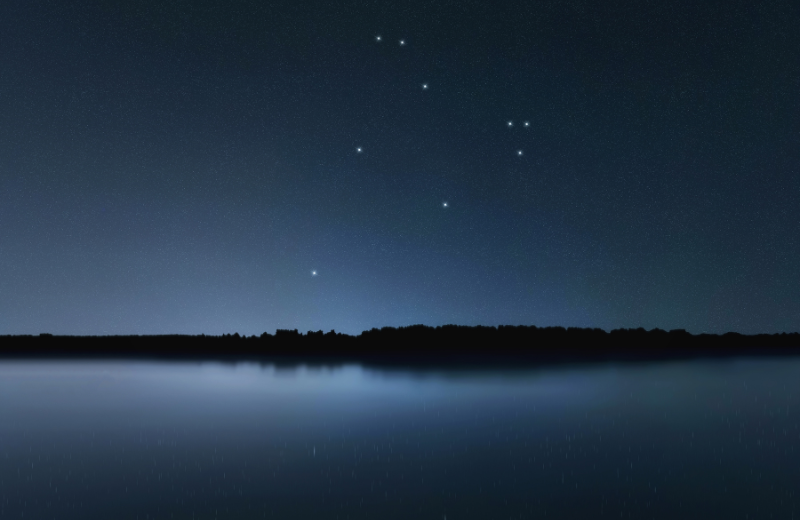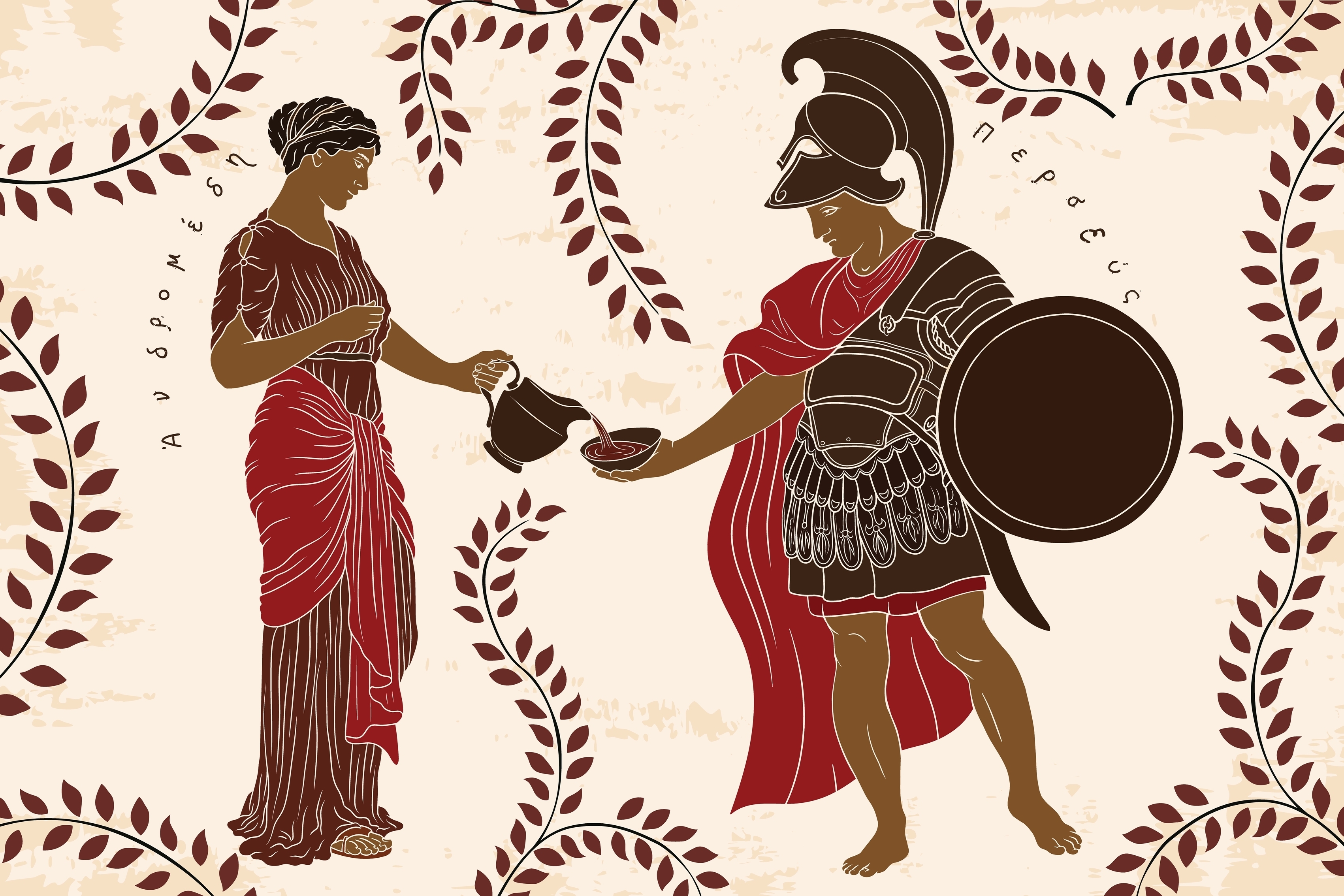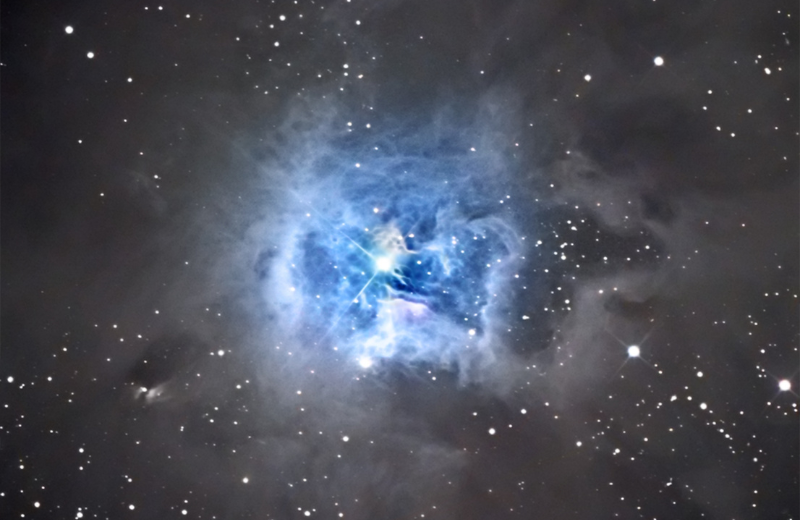The Cepheus constellation has an intriguing tale rooted in ancient mythology, along with some fascinating stars and celestial objects. Whether you're a stargazer, an amateur astronomer, or someone who enjoys learning about the stories behind the stars, this guide helps you explore the Cepheus constellation, its stars, and its mythology.
Jump to:
Recommended for you!
Best SellersWhat is the Cepheus Constellation?
The Cepheus constellation is one of the 88 modern constellations recognised today, located in the Northern Hemisphere. It's named after a mythical king, Cepheus, who was a character in Greek mythology. While Cepheus may not be as prominent as some other constellations, it is still significant, with its stars forming a pattern resembling a simple house or a crown. This constellation covers a decent portion of the sky and can be spotted throughout the year from the Northern Hemisphere.
What Does Cepheus Look Like?

Cepheus is often depicted as a house-like shape, with five main stars outlining a rough pentagon. When observed closely, it can also resemble a crown or a stick figure wearing a crown. Unlike some brighter constellations such as Orion or the Big Dipper, Cepheus doesn’t stand out as much, but with a bit of patience, you can easily find its distinctive shape. The constellation's brightest star, Alderamin, forms one corner of the 'house,' making it a useful point of reference.
How Far is the Cepheus Constellation from Earth?
The Cepheus constellation itself isn't a single distance from Earth, as it consists of multiple stars and celestial bodies located at various distances. The stars within Cepheus are spread out across the galaxy, ranging from a few dozen to thousands of light-years away. For instance, the red supergiant star known as Mu Cephei, also called the 'Garnet Star,' is approximately 5,200 light-years from Earth.
The Cepheus Constellation Myth

The myth of Cepheus is entwined with the legendary tale of Perseus and Andromeda. In Greek mythology, Cepheus was the king of Ethiopia, married to Queen Cassiopeia. The couple's daughter, Andromeda, was famed for her beauty. However, Cassiopeia's vanity led her to boast that her daughter was more beautiful than the Nereids, the sea nymphs. This angered Poseidon, the god of the sea, who sent a sea monster to ravage the kingdom.
To appease Poseidon, Cepheus and Cassiopeia had no choice but to offer Andromeda as a sacrifice, chaining her to a rock by the sea. She was eventually saved by the hero Perseus, who arrived just in time to slay the sea monster and rescue her. In recognition of Cepheus' role in this myth, Zeus placed him among the stars, along with Cassiopeia and Andromeda, to commemorate the story for eternity.
Cepheus' Stars
The constellation of Cepheus is home to several stars that are notable for their brightness and their unique characteristics:
- Alderamin (Alpha Cephei): This is the brightest star in Cepheus, located around 49 light-years from Earth. It shines with a white light and is a main-sequence star, meaning it is in the stable part of its life cycle.
- Mu Cephei (The Garnet Star): This red supergiant is one of the largest stars visible to the naked eye. The deep red hue of Mu Cephei inspired Sir William Herschel to nickname it the 'Garnet Star' because of its rich, jewel-like colour.
- Delta Cephei: This star is not just any ordinary star; it is the prototype of a class of stars known as Cepheid variables. These stars are known for their regular pulsations in brightness, which have been used as 'standard candles' to measure astronomical distances.
- VV Cephei: One of the largest known stars, VV Cephei is a binary star system consisting of a red supergiant and a blue main-sequence star. It lies about 5,000 light-years away and has a diameter large enough to extend beyond the orbit of Jupiter if it were placed in our Solar System.
Nebulae in the Cepheus Constellation

Cepheus also contains several nebulae that add to its celestial beauty:
- The Iris Nebula (NGC 7023): This is a bright reflection nebula located about 1,300 light-years away. The Iris Nebula glows with a blue hue due to light from nearby stars reflecting off dust particles within the nebula.
- The Wizard Nebula (NGC 7380): Located around 7,000 light-years from Earth, this nebula is associated with an open cluster of young stars. The shape of the nebula has inspired its magical name, as it appears to resemble a wizard in some views.
Finding Cepheus in the Sky
For the best view of the Cepheus constellation, aim to stargaze during the northern autumn months, particularly in October. During this time, Cepheus reaches its highest position in the sky, making it more visible and easier to spot.
Locating Cepheus
Begin by identifying the nearby constellation of Cassiopeia, which has a distinctive W or M shape depending on the time of year. Cassiopeia is located to the south of Cepheus. By locating Cassiopeia first, you'll have a better chance of finding Cepheus directly to the north. The constellation’s stars form a shape resembling a house or crown, which helps in distinguishing it, even though its stars are not as bright as those in some neighbouring constellations.
Using a Star Map or Stargazing App
For greater accuracy, consider using a star map or a stargazing app to help you pinpoint Cepheus in the current night sky. These tools are particularly useful because some of Cepheus’ stars may not stand out as much as those in nearby constellations.
Viewing Cepheus with Binoculars or a Telescope
- With Binoculars: Although Cepheus' stars may not appear as bright to the naked eye, binoculars can help you trace the constellation’s shape and better appreciate its unique features.
- With a Telescope: A telescope will provide a clearer and more detailed view of Cepheus’ stars, including the remarkable red supergiant Mu Cephei, known as the Garnet Star. Focusing on prominent stars like Alderamin will enhance your understanding of the constellation’s structure.
The Best Viewing Conditions
To fully enjoy observing Cepheus, choose a location with minimal light pollution and a clear, dark sky, preferably on a moonless night. These conditions will maximise your chances of spotting Cepheus’ subtle star patterns and its intriguing deep-sky objects.
Recommended for you!
Best SellersFun Facts About Cepheus
- Cepheus’ Nickname: Sometimes referred to as the 'King of Ethiopia,' reflecting his role in Greek mythology.
- Linked to Astronomy History: The variable star Delta Cephei was first studied in the 18th century, leading to the discovery of Cepheid variable stars and contributing significantly to the field of astrophysics.
- Home to a Famous Galaxy: The galaxy NGC 6946, also known as the 'Fireworks Galaxy,' is located on the border of Cepheus and Cygnus. It gets its nickname from the many supernovae observed within it.
- Pronunciation Tip: 'Cepheus' is pronounced as 'SEE-fee-us' in English.
Study Astronomy for £29
If you’ve enjoyed this guide to the Cepheus constellation and want to learn more about the stars, nebulae, and other wonders of the universe, consider studying astronomy in greater depth. Centre of Excellence offers an Astronomy Diploma Course that provides a fascinating introduction to stargazing, celestial objects, and the science behind the night sky. The course is currently available for just £29!













